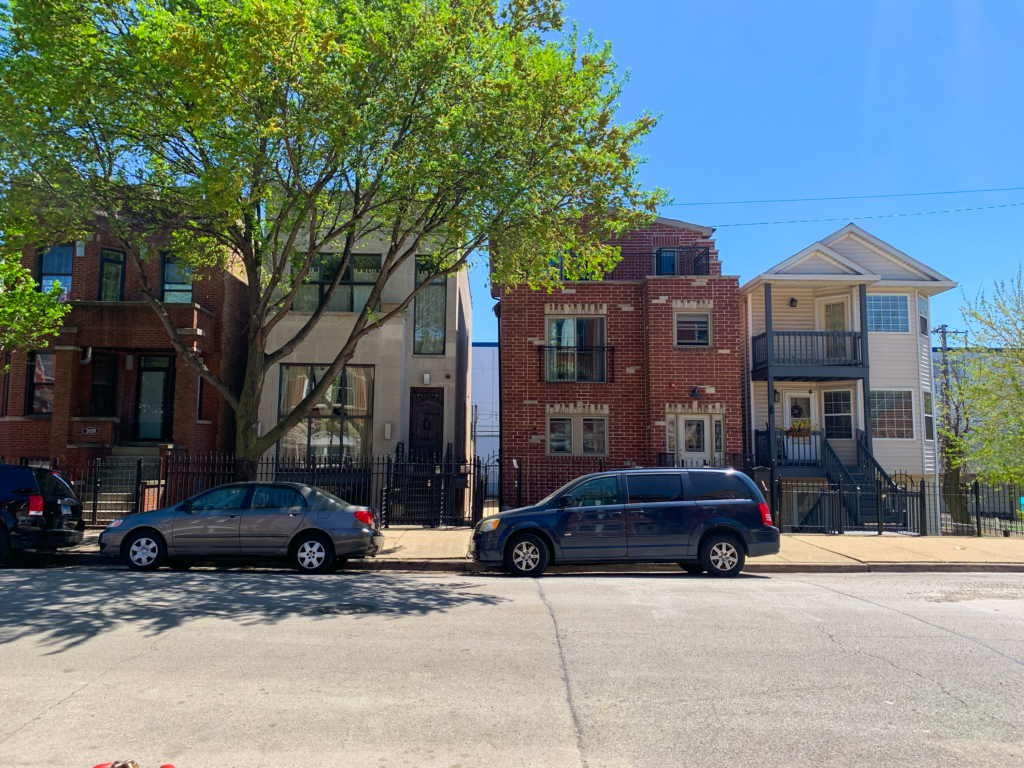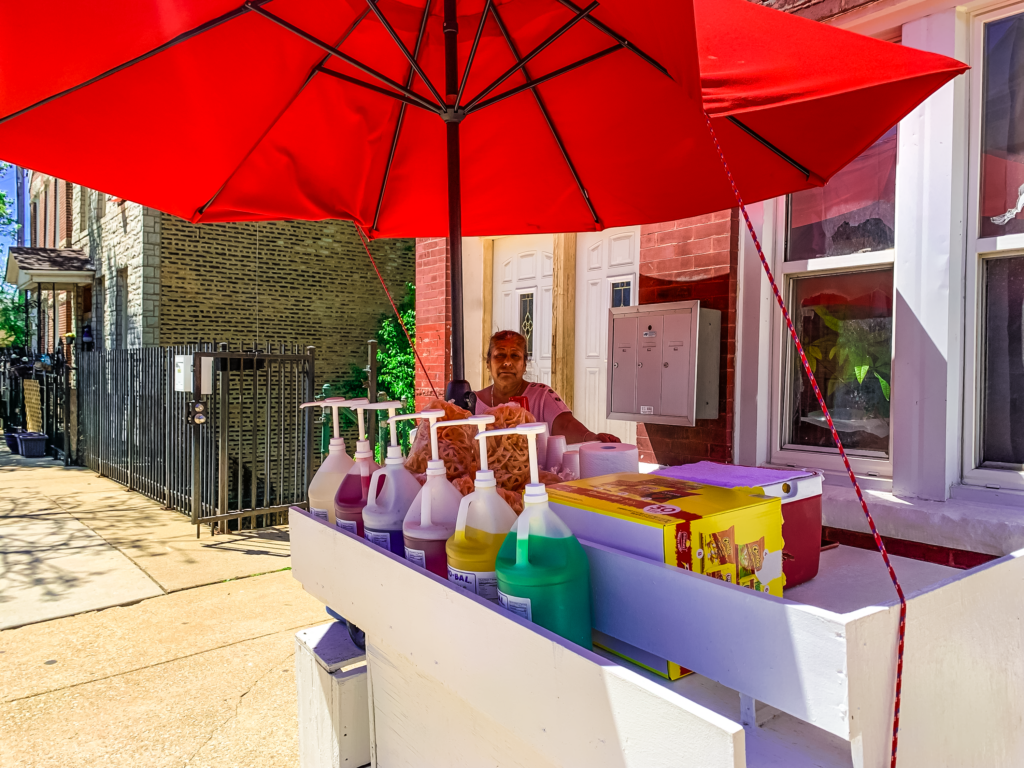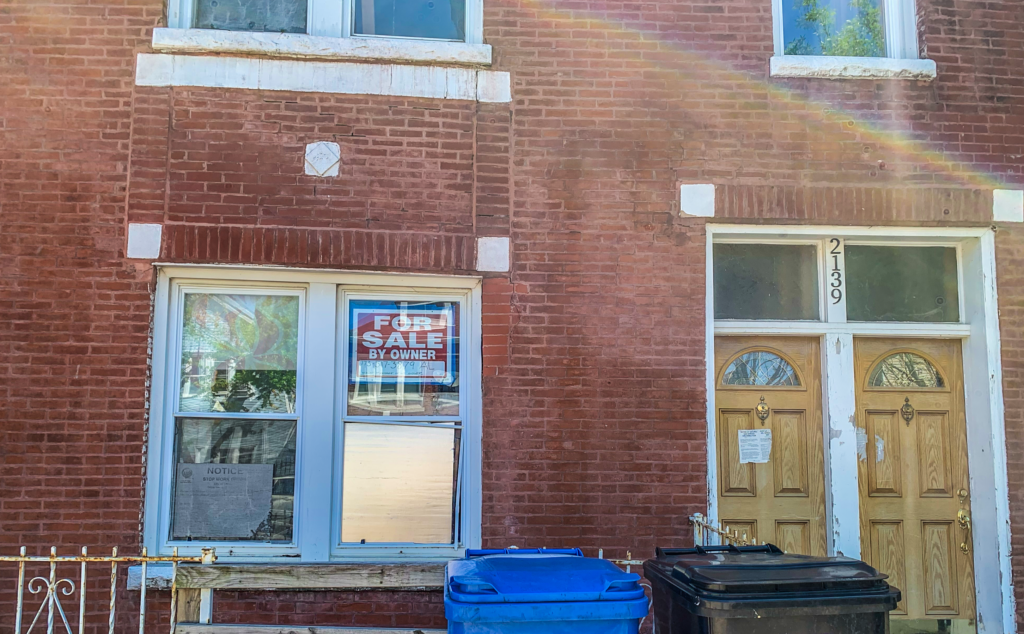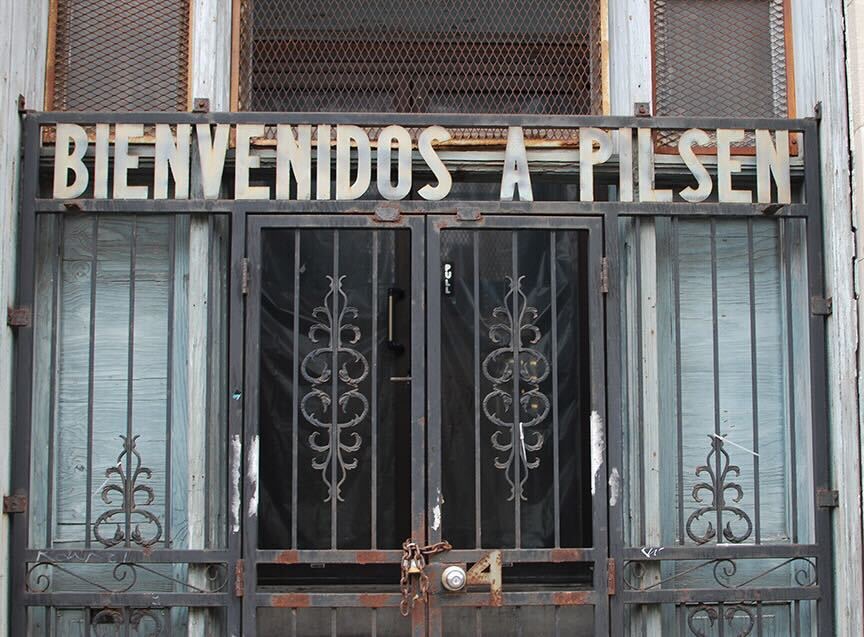Gentrification has already pushed property taxes in Pilsen and Heart of Chicago, two neighborhoods on the Lower West Side, up in recent years—and now, residents are beginning to worry that the proliferation of Airbnbs in the area will push them even higher.
Residents said they aren’t necessarily worried about people occasionally renting out Airbnbs long-term. It’s more about the hotel-like Airbnbs operated by affluent people in struggling communities, especially when the people involved aren’t from the community.
Airbnbs can stimulate gentrification. A 2017 study found that short-term rentals like Airbnb take away already scarce housing and landlords may encourage tenant evictions so they can earn more. Local home prices also go up. Higher prices result in higher property value and taxes which forces homeowners to increase the rent or force people who cannot afford the taxes to sell their homes.
There are over 1,000 Airbnb listings in Pilsen and Heart of Chicago, according to Airbnb.
Casa Corazón, an Airbnb on 24th and Damen, is one of the many short-term rentals that have proliferated in Pilsen in recent years. It’s owned and operated by Amanda Gentry, an artist who bought the two-story home in 2004 for $259,000. It’s near public transportation, with the Pink Line Damen stop minutes away, and the Damen and Western Avenue buses nearby. The Stevenson Expressway is about a mile away.
Last month, the house went on sale with an asking price of $500,000.
According to her Airbnb listing, Gentry operated it as a short-term vacation rental for more than a decade. The three-bedroom Airbnb, which lists rooms at $82 per night, boasts positive reviews from hundreds of tourists. In big cities like Chicago, short-term rentals are typical for tourists going to concerts or summer events, and rentals peak in June and July. Gentry’s sculptures and paintings sell for between $650 to $37,000 apiece. According to the short-term-rental data site rabbu.com, Casa Corazón’s three listings may earn, on average, close to $45,000 annually.
Gentry did not respond to requests for comment.

As of press time, the house is listed as “contingent” on Redfin, meaning an offer has been accepted, but additional criteria must be met to complete the sale. It was listed by @propetries Christie’s International Estate, a global network of luxury real estate brokerage firms that claims $29 billion in annual sales owned by Mike Golden and Thaddeus Wong.
A spokesperson for @properties said that over the last two years they’ve been involved in about fifty real-estate transactions on the Lower West Side. They’ve represented both buyers and sellers, and the property types include both residential and commercial, the spokesperson said.
The brokerage company @properties was a key driver in the gentrification of various North Side neighborhoods, including Wicker Park. In a 2007 Bloomberg article, Wong talked about what attracts investors. “You have to bring people in with art galleries and restaurants,” he said. “That’s how people become familiar with neighborhoods.”
He also said that people want a good transportation infrastructure, and that communities gentrify faster when zoning laws are flexible. In 2018, Wong evicted Uptown Underground, a burlesque venue, because tenants could no longer afford to pay the $12,000 monthly rent. In 2023, he bought an ornate Victorian home in Lincoln Park and ordered its demolition despite pushback from preservationists.
Between 1970 and 1996, Pilsen fought against development projects to prevent gentrification. But those efforts were challenged in 1996 when alderman Danny Solis was appointed to the 25th Ward by then-mayor Richard M. Daley, who both welcomed gentrification.
Gentry bought the home at 24th and Damen around the time when some community organizations began demanding Solis push back against development that was driving up the cost of living. In 2004, a network of about two dozen community organizations and local churches asked Solis to involve residents in all development decisions. Through a referendum, Solis created the Pilsen Land Use Committee (PLUC), a closed committee of neighborhood leaders that he himself appointed.
The Weekly interviewed John J. Betancur, a professor of Urban Planning and Policy at the University of Illinois in Chicago who has studied gentrification in Chicago for decades and co-wrote the 2016 book Claiming Neighborhood: New Ways of Understanding Urban Change.
While there was pushback against outside developers, especially from organizations like Pilsen Alliance, other organizations supported “balanced development,” which Betancur said was “a nice way to hide the gentrification from the agenda.”
He said that organizations such as The Resurrection Project, Alivio Medical Center, and Pilsen Neighbors Community Council supported Solis. Despite having a mission of guarding against displacement, they “jumped on the bandwagon of what is called a nonprofit industrial complex and became more interested in building themselves than saving the neighborhood,” he added.
While rental prices grew unaffordable for some residents, affluent individuals were able to profit. “They [took] advantage of the fact that they already have a starting point, profession, a good job and great access to resources and knowledge of the market,” Betancur said.
Julia Madera has lived on 24th and Damen for thirty-two years. In 1998, Madera and her husband bought a multi-family home on the block for $152,000. She raised her three children who are now thirty, twenty-nine, and thirteen in that house.
They all attended early childhood programs at the community organization El Valor, and went to nearby Irma Ruiz Elementary School. “It’s really calm here,” Madera said. “I like it because everything is within walking distance. The schools, the clinic, my church, the buses.”
Madera said their neighbors have left over the years, moving to other neighborhoods and suburbs where homes and rent are less.
Betancur said that when families leave due to gentrification, they sacrifice a lot of the benefits of being in a metropolitan area, such as the schools being within walking distance and developing systems of support like churches and community organizations. “It just means dissolution of the extended family…that’s what gentrification produces,” he said. “That’s what society doesn’t care about.”

Madera said she wants to keep the home in the family, which is why in 2016, she and her husband sold the building to their eldest son. Madera and her husband live in one of the units, while their two sons, their wives and their children, occupy the other two. Her grandchildren now attend preschool programs at El Valor.
The house and property taxes are currently being split between three different incomes—her husband’s and their two sons’. Her husband and oldest son work as cement truck drivers and the younger son is a butcher at Casa del Pueblo in Pilsen and a Tony’s Fresh Market.
Madera said that even though it’s hard to pay for the family home, she wouldn’t want to leave. But every now and then, she is tempted. “I truly want to stay here. Things happen here, but it’s a lot safer than other neighborhoods,” she said. “I don’t imagine living anywhere else.”
Recently, Pilsen activists have fought back against the record-high property tax hike and Alderman Byron Sighco-Lopez (25th Ward) supports expanding the more than twenty-five-year-old Pilsen Industrial Corridor TIF district to build affordable housing.
But not everyone in the community is on board. Some residents fear that property taxes will increase. Betancur agrees and adds that affordable housing is not necessarily affordable.
In order to be eligible for affordable housing, he said, people need a steady income, employment, and at times, good credit—resources that people who are struggling tend not to have. “It’s a poisonous idea.” He added that affordable housing also causes the value of the surrounding properties to go up.
“I understand people’s concerns,” said Sigcho-Lopez, who was previously the director of Pilsen Alliance and isn’t a fan of TIFs. “When the market gets that this is not about bringing luxury development and not about bringing luxury businesses, and that this is actually an amendment to address displacement in the neighborhood… I think the market will adjust based on those expectations.”
He also said they are working on legislation that would allow TIF dollars to also be used directly to assist homeowners and small businesses impacted by the tax increases.
Sigcho-Lopez said ultimately he sees an immediate need for development. “We want to make sure that the creation of new housing is done by the community, and that it is in writing, as a requirement, not as an option.”
In the last couple of years, Madera said some of her neighbors left for Back of the Yards where rent is more affordable and home prices are much less. “They leave to 50th and Damen. It’s sad because they actually end up losing because it’s a high crime area.” Madera said that some of her neighbors also moved to the southwest suburbs, Cicero and Berwyn.
A neighbor on Coulter Street, Dolores Delatado, said she has lived in the Heart of Chicago area for thirty years. She raised nine children along with her husband, but they always rented. In the last decade, she said she has seen a huge change with more güeros, or white people, coming to rent and buy homes.
In 1990, the Lower West Side, where Pilsen and Heart of Chicago are located, was 88 percent Latinx. By 2020, the percentage of Latinx residents had dropped to 71 percent.
Delatado’s daughter, who works as a manager at a Dunkin Donuts, lives with her and helps support her. Delatado sells elotes and ice cones from a pushcart in front of her house for extra money. “It’s a little help,” she said.
Delatado and her daughter pay $1,000 for a three-bedroom apartment unit. When she first moved in thirty years ago, the rent was $250, or about $540 in today’s dollars. She said her neighbors next door are paying more than $3,000 each month, and they were moving out on April 30, heading to Kenwood.

The couple, Andrea Kenerew and Andrew Cass, moved to Heart of Chicago three years ago to provide their son with a good environment and heard good things about the nearby schools. “It’s a nice family block,” Cass said.
But in the last year, their landlord jumped the rent from $2,750 to $3,150 on their duplex with three bedrooms and a den. They said that the landlord lives in Morton Grove.
“This definitely fit the bill at first, but they were coming up on our rent crazy,” Cass said. “It was already at the highest end of our price range.”
Betancur said gentrification is not inevitable. He pointed to rent control as one measure and assessing homes not on its property market, but the income of the owners so that people don’t have to pay taxes on the basis of the market value of the building. Betancur also said he thinks it’s important to lower taxes for homeowners who are struggling to pay. Finally, “don’t approve more construction permits, or rezonings. Leave them as they are. Those are tools that exist in the book.”
The problem, he added, is getting elected officials on board.
“Most of the people in City Council are realtors themselves and make their money speculating, or are attorneys themselves heavy in the industry of appealing taxes and are heavy in the business assisting with real estate transactions,” he said. “They make money with gentrification.”
Alma Campos is a senior editor for the Weekly.



Interesting to see Prof. Betancur quoted yet again on this article. I am sure he is an excellent professor, but has he directly helped low-income families in Pilsen? Has he provided free to low cost medical care, regardless of citizenship status? Has he provided immigration clinics, credit counseling, or affordable housing to families in need? I must have missed the Betancur Medical Center and Housing Community. Please let me know where it’s located so I can send neighbors seeking help his way.
It would be better if Prof. Betancur kept his professorial opinions on gentrification to the classroom, instead of pointing fingers at key Pilsen institutions that are *trying* to keep low-income families healthy and housed. He is clearly educated enough to understand that organizations must operate in the broader system of power, politics, and finance; but he ignores that to cast petty blame as if the non-profits he mentioned are renting out AirB&Bs, deconverting single family homes, or approving recycling centers in our community. He seems delighted to offer a quote though, must love the fame outside of the Peoria darkened classrooms!
Also – what kind of urban policy professor says “don’t approve more construction permits” in a community dealing with high cost of housing? We need new homes – of all types – built on appropriate sites to ease pressure on the existing housing stock and reduce displacement. Seriously, what?
Shame on him. Sea mejor, Prof. Betancur.